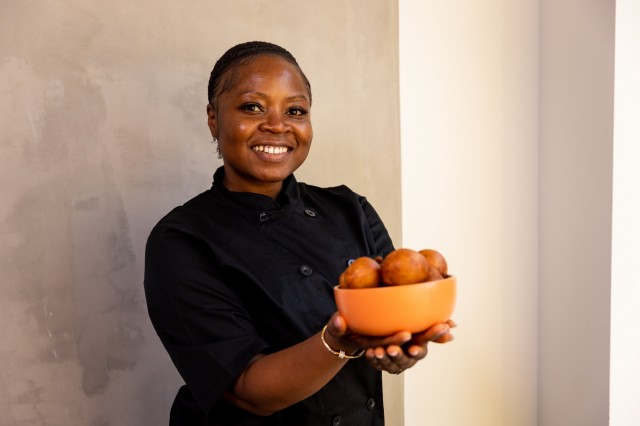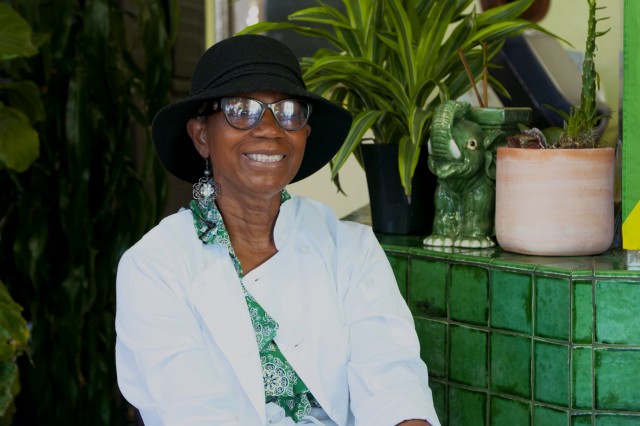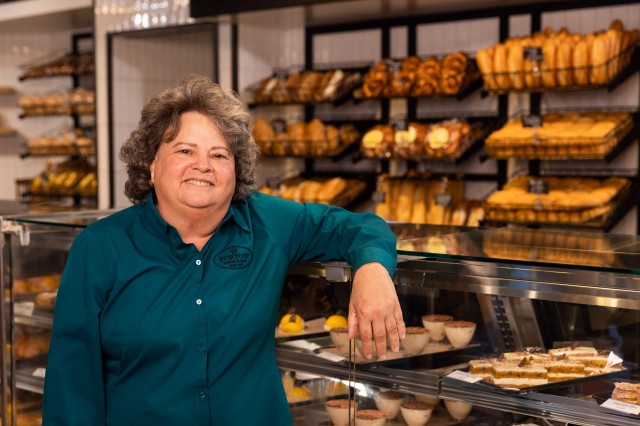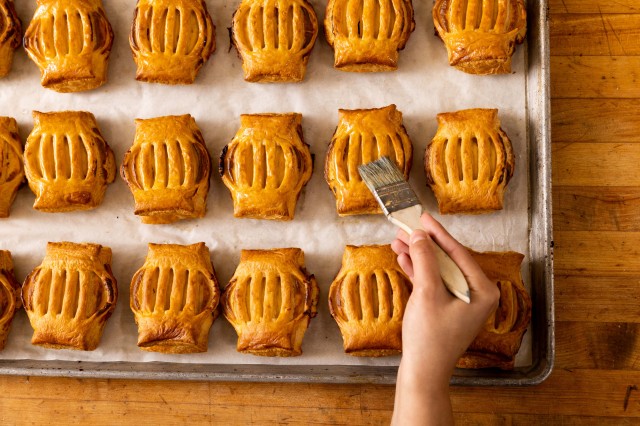
Traditional Filipino Breakfast, Salty or Sweet
Greg Capulong | Auntie Dees Pan de Manila
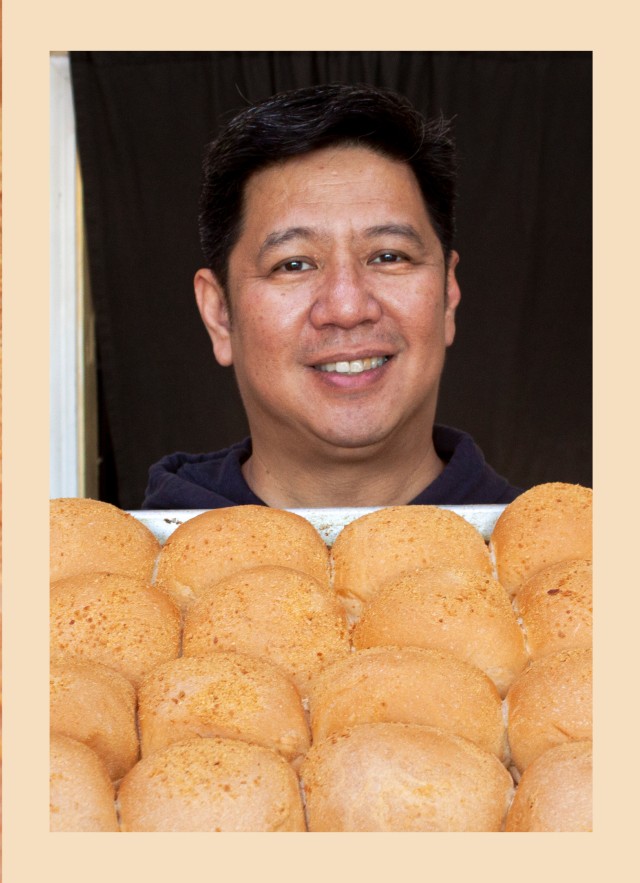
Kneaded: L.A. Bread Stories, celebrates L.A. history, heritage, and communities through the lens of bread.
Over the last 12 years, Auntie Dees Pan de Manila has been serving up the familiar flavors of home for Los Angeles’s Filipino community. Growing up in the Philippines, Greg Capulong remembers the important role neighborhood bakeries played in the community. Having relied on daily bakery runs, Greg’s father and sisters turned their love of food into an opportunity to open up a business that is not only important to the Glassell Park community but also to their family.
Having a place in Glassell Park is important so the Filipino community can carry on that tradition of purchasing fresh pan de sal from a local bakery.
Greg Capulong
Tell us about how Auntie Dees Pan de Manila started.
Auntie Dees Pan de Manila was started by my father and my sisters twelve years ago. My father was a chemical engineer, and when he retired, he wanted something to do. There is some chemistry involved in baking, and he was good at following recipes and formulas, so it was a natural transition for him. My sisters always loved food (who doesn’t?), and they saw the opportunity to start this business with him.
The place is named after my sister, Lourdes. My son could not pronounce her name when he was younger and called her Auntie “Dees” instead. So that’s the origin of the name of the business. Other family members are still involved in the business, including my father, who still helps out, despite the fact he is 88 years old! I began working here after I immigrated to Los Angeles from Manila (Philippines) back in 2018. Working in the family business was a natural fit, and I am happy to be part of the overall larger community.
What is Auntie Dees Pan de Manila best known for?
We make many different traditional Filipino pastries and foods. However, people rely on us to make pan de sal. This bread is a staple food for Filipinos, like rice is in other cultures. Pan de sal is a traditional breakfast–just that and coffee. In the Philippines, people just walk down the block to their local baker and pick up fresh pan de sal daily. Having a place in Glassell Park is important so the Filipino community can carry on that tradition of purchasing fresh pan de sal from their local bakery.
How would you describe pan de sal?
Pan de sal is a Spanish word. The reason this uniquely Filipino bread has a Spanish name is because for over 300 years, the Philippines were colonized by Spain. Many Spanish speakers recognize the Spanish translation of the word; pan de sal means “salt bread.” Most people expect it to be salty but actually, it has a light sweet flavor. When people realize this they just smile at me with confusion. I’m not sure why it’s called pan de sal when it is much more sweet than salty. But who am I to question the name at this point?
Tell us about your favorite part about baking pan de sal.
My favorite part is the smell–oh, the smell! The way pan de sal smells when it's cooking in the oven is such a comforting experience. I also enjoy watching it rise. It starts out so small and then as the dough rises it gets so big. The entire process is very fulfilling.
Before: These balls of pan de sal dough are ready to be put in the oven.
After: Aunty Dees pan de sal really puffs up while it is baking.
1 of 1
Before: These balls of pan de sal dough are ready to be put in the oven.
After: Aunty Dees pan de sal really puffs up while it is baking.
How does pan de sal bring the Filipino community together?
Pan de sal is a shared experience for us, and I'm happy our bakery can be that place for Filipinos living in Los Angeles. I have never met a Filipino person who hasn’t tasted pan de sal! Most people I know would rather go every morning to the local bakery instead of making their own–and we keep that same tradition here in L.A.
We open at 7:30 am, and there are usually people already waiting in line, usually in their jammies waiting to get their pan de sal. After they get their pan de sal, they go home and have breakfast. I’m proud Aunty Dees has become the local neighborhood bakery for Filipinos in the community. Although, it’s not just Filipinos who come here and enjoy our pan de sal, everyone does! And while pan de sal is our number one seller, there are many other traditional baked goods on Aunty Dees menu as well.
When making these ube filled ensaimada, Greg spreads a long line of ube paste down each sheet of dough. He then folds it over pinching the top so they look as good as they taste.
Fresh from the oven, ube ensaimadas are ready to be topped with butter and enjoyed.
When making Aunty Dees chicken empanadas, the dough is pressed into the perfect size and shape using this machine.
A generous scoop of chicken and vegetable filling is placed in the center of the dough before each empanada is sealed.
Siopao are dumplings that originate from China but have long been incorporated into traditional Filipino cuisine.
1 of 1
When making these ube filled ensaimada, Greg spreads a long line of ube paste down each sheet of dough. He then folds it over pinching the top so they look as good as they taste.
Fresh from the oven, ube ensaimadas are ready to be topped with butter and enjoyed.
When making Aunty Dees chicken empanadas, the dough is pressed into the perfect size and shape using this machine.
A generous scoop of chicken and vegetable filling is placed in the center of the dough before each empanada is sealed.
Siopao are dumplings that originate from China but have long been incorporated into traditional Filipino cuisine.
What are ways that Aunty Dees Pan de Manila brings folks from non-Filipino backgrounds together?
The Philippines has a rather strong connection with China, so we see members of the Chinese community in Los Angeles enjoying our food too. One traditional dish we serve is siopao, which originated in China. Because the Philippines does a lot of trade with China, there are many Chinese Filipinos, it's a dish we have adopted into Filipino culture.
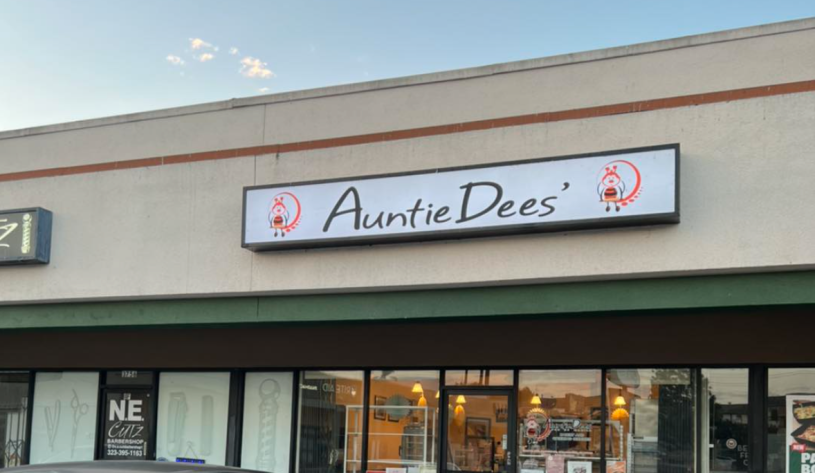
EXPLORE MORE FROM Auntie Dees Pan de Manila
To see what’s cooking at Auntie Dees Pan de Manila, visit their Facebook account or visit their bakery, located in Los Angeles at 3756 W Ave 40 Ste 1G Los Angeles, CA 90065.
SHARE YOUR L.A. BREAD STORIES
Do you know an L.A. breadmaker who lovingly connects to your community? Do you want to share your favorite experience at Aunty Dees Pan de Manila? Join the conversation by tagging @NHMLA with #KneadedLA, and your story could be featured next!
Following the success of Kneaded: L.A. Bread Stories, we're celebrating the history, heritage, and communities of Los Angeles through the lens of different cultural traditions. This year, L.A. at Play highlights the vibrant and visionary work of artisans who fabricate dolls and figurines using a variety of techniques and materials.
